Sarah, a busy mum, recently faced a frustrating challenge trying to resolve an issue with her online purchase. Her experience is a common one that many customers encounter when dealing with customer service departments that still need to adopt a unified approach. Initially, Sarah had to endure disconnected calls, repeatedly provide the same information across different platforms, and waste hours in queues—a classic scenario in many traditional contact centres.
However, everything changed when the Business Process Outsourcing (BPO) contact centre handling her favourite retailer’s customer service upgraded to an omni-channel strategy. Now, Sarah starts her query through the retailer’s app while on her morning commute, pauses to drop off her kids at school, and picks up the thread via email with no repetition or delay. By dinner time, her issue is resolved. The seamless transition between communication channels, managed by the BPO, ensures that her problem is addressed efficiently without any hitches.
Customers, like Sarah, expect timely responses that fit seamlessly into their busy schedules. According to a Microsoft study, 66% of consumers use at least three different communication channels to contact customer service. This evolution from single-channel to multi-channel, and now to omni-channel customer service, highlights a giant leap in consumer expectations and behaviour.
The Importance of Omni-channel Strategies
BPO contact centres that adopt omni-channel strategies are not merely keeping up with technology; they are setting new standards in customer interaction. By integrating various communication channels—phone, email, social media, live chat, and more—into a cohesive customer experience, these BPOs are leading the way in customer satisfaction. The result is not just about staying relevant; it’s about excelling at customer retention and loyalty, crucial metrics for any customer-centric business in today’s competitive landscape.
By ensuring information flows seamlessly across channels, customers like Sarah can avoid repeating their stories, reducing their effort and increasing their satisfaction. Companies with strong omni-channel customer engagement retain, on average, 89% of their customers, compared to 33% for companies with weak engagement. The key benefit here is keeping the customer satisfied and converting their experiences into positive brand loyalty and advocacy.
Challenges in Adopting Omni-channel Strategies
Adopting an omni-channel strategy is like coordinating a relay race where each runner represents a different communication channel—phone, email, social media, live chat, and more. The challenge lies not just in the handoff of the baton (or the customer’s query) from one runner to the next, but in ensuring each runner knows the route, understands the pace of the race, and is perfectly synchronised with the others. If one runner stumbles, the whole team’s performance is jeopardised. Similarly, if one channel fails to deliver consistent and informed service, the entire customer experience can falter.
Overcoming these challenges involves strategic planning and prioritising a unified view of customer interactions across all channels. Comprehensive training programs ensure that every team member, similar to each runner, understands not only their role but also the roles of their teammates. This preparation helps in seamless transitions and consistent customer interactions, focusing on the smooth completion of the race—satisfying the customer’s needs—rather than the mechanics of the individual steps involved.
Key Components of an Effective Omni-channel Strategy
An effective omni-channel strategy starts and ends with the customer experience. The ideal outcome is a customer who feels understood and valued, no matter how or where they reach out. For instance, when a customer emails a complaint and then calls to follow up, the agent on the phone should not only know about the email but also the content and context of it. This makes the customer feel attended to as if they are continuing a conversation rather than starting a new one.
Fulcrum deployed Cirrus’ omni-channel contact centre platform, implementing email capabilities to enhance customer service. The result was improved resource allocation, enabling the measurement of response times, agent productivity and reporting against agreed performance metrics. Mechanisms were also built to easily escalate customer emails to other internal teams through any channel. This led to faster handling times and a better experience for Fulcrum’s customers.
The results of this initiative were compelling:
- Operational uptime improved to 99.5%, exceeding the set goal.
- Client issue reports halved within the first year, significantly boosting client trust and satisfaction.
- Introduction of email and enhanced reporting capabilities led to a 30% improvement in response times and a 25% increase in client retention rates.
These outcomes demonstrated Fulcrum’s commitment to excellence and positioned the company as a leader in innovative, customer-centric BPO solutions in the vehicle management sector.
Strategies for Successful Implementation
For BPO contact centres looking to embrace omni-channel strategies, the path forward involves several clear, actionable steps:
- Assess Current Capabilities: Start by understanding your existing infrastructure and customer service processes. Identify gaps in communication channels and data integration.
- Invest in Technology: Implement tools that allow for the integration of various communication platforms, ensuring data can seamlessly transfer between them without losing context.
- Train Your Team: Equip your staff with the skills needed to handle multiple channels effectively. This includes training on the technology and on delivering a consistent service experience regardless of the channel.
- Monitor and Adapt: Use analytics to monitor performance across channels and make adjustments as needed. This continuous improvement cycle is key to refining the customer experience and operational efficiency.
Every step in the implementation process should tie back to customer happiness and improving business results. For example, by training staff to handle multiple communication channels, BPOs can reduce response times and increase customer satisfaction. Integrating data across these channels ensures that no customer has to repeat information, thereby increasing efficiency and reducing frustration. These improvements directly contribute to higher customer retention rates and better financial performance.
Conclusion
The nature of customer service is continually evolving, influenced by technological advancements and changing consumer expectations. As customers increasingly seek convenience, speed, and personalisation, the importance of adopting adaptable, responsive service models becomes more apparent. Omni-channel strategies are at the forefront of this evolution, offering a way for BPO contact centres to meet and exceed modern customer demands.
Ready to Transform Your Customer Experience?
At Cirrus, we understand that transitioning to an omni-channel approach is a complex step forward. That’s why we’re here to help you every step of the way.
Take the first step towards a superior customer service experience. See for yourself how we’ve helped other BPOs make the transition effortlessly. Contact us to have a no-obligation conversation.




